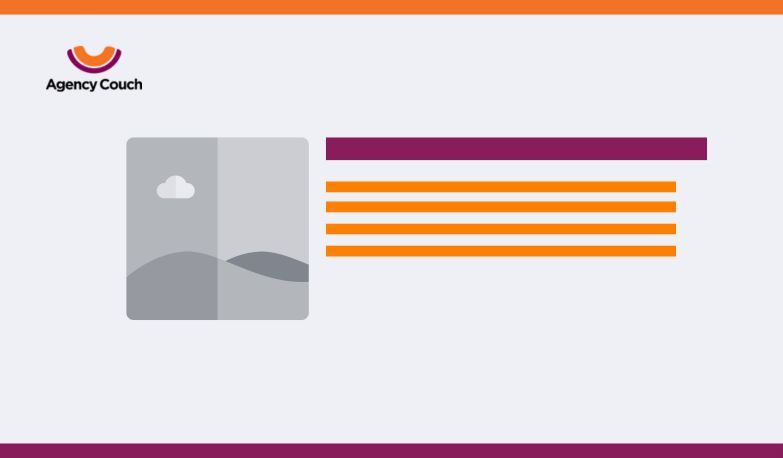If you own or manage a blog, you know the headaches that come with making sure your blog reaches the right readers. Because without them, no matter how great your content is, it will make no difference.
For many companies, blog posts are the core of the SEO strategy. As such, creating high-quality content that is both relevant and useful is important. Properly written content keeps your visitors on your website for longer periods of time, which improves your search rankings immensely.
Other factors like high CTR, backlinks, keywords and user experience also fall under the umbrella of search engine optimization. Making sure that all of these factors are optimized for every blog post is vital to SEO success.
Unfortunately, doing this is difficult and not very intuitive, and as a result, many companies rely on older methods of SEO, none of which work anymore. Many companies still practice keyword stuffing, the practice of putting in all kinds of relevant and irrelevant keywords in an attempt to improve their rank on search engines.
Keyword stuffing also increases keyword density, which is something that can negatively impact rankings as well as the quality of your content. There are many other outdated SEO methods like forcing backlinks, creating private blog networks, content spinning, etc, none of which work.
Instead, writers and SEO executives need to do a fair bit of legwork to plan and execute posts. By planning posts, deciding on intent, and selecting the proper reader persona, bloggers can create interesting SEO-friendly content.
10 Tips for Creating SEO Friendly Content that Your Readers Love
Often, people believe that user-friendly content and SEO are at odds with each other. This myth is common, due to older SEO practices such as keyword stuffing and long-tail keywords that made no grammatical sense. And writing for people requires writing in a human way that appeals to your readers. However, how will you get readers if your post is not discovered?
Thankfully, this is no longer the case. Google’s new algorithm updates cater to user intent, value-based content, and credible information. So SEO is no longer a bane to human content for your readers. You can employ the following tips for creating content that is loved by your readers as well as search engines.
1. Plan Your Blog
Writing high-quality content can be difficult. But using a process to systematically plan your blog by focusing on the most important aspects makes things significantly easier. We discussed the dangers of keyword stuffing and keyword density earlier, but that does not change the fact that properly used keywords are vital to the success of your blog.
By selecting the correct keywords, be they normal or long-tail, you can make your articles discoverable to a large audience. Similarly, by conducting keyword research around the topics of your blog, you can find underused or otherwise interesting niches to write about.
Research is an integral part of writing a blog. Proper research gives depth to your blog, making it useful as well as memorable. Making sure that your blog content is informative, engaging, and well-researched is what makes the difference between a hit and a flop.
The final aspect of planning a blog is structuring it properly. There are four elements that are common to any good blog – a title that grabs attention, an introduction that hooks the reader, the body which flows through a logical series of connected points, and a conclusion that ties it all off and ends with a call to action.
2. Don’t Shy Away From Proper Formatting
Blogs are a relatively new form of media and are written and read differently from other forms. They are designed to help you consume large amounts of information quickly and efficiently, to help you locate the required topics at a glance, and if need be, direct you towards other resources. This means that blogs need to have all their information delineated properly. This is where proper formatting comes in.
Two of the most important formatting tools available to blogs are subheadings and paragraphs. By clearly marking out points to focus on, subheadings enable readers to immediately look at the sections they are interested in. This makes the blog reading experience much more comfortable for the reader.
Additionally, search engines pick up on the HTML tags of heading and subheadings to crawl through your content, so proper formatting is a must for discoverability.
3. Understand and Apply Intent
Gone are the days when writing a semi informative article in a legible language would get you visitors that convert. There are over 1.7 billion websites on the internet that publish over 7.5 million blog posts every single day. And this number only keeps growing. So what is it that you need to do in order to stand out?
If you wish to have a blog that is appreciated, engaged with, and shared, you need to offer value through the blog post. But the problem with that is that value is a subjective term. What may seem useful to one reader may not be useful for others. This is why being mindful of your blog’s intent is crucial. You need to first decide who your blog is meant for and then decide why. What problem does your blog solve? What might the reader be thinking when stumbling across your post? Use all of this information to solidify the intent of your blog.
The intent is basically what the reader is looking for in your blog, and if you can offer the same, your blog will be memorable. This applies to your overall blog as well as individual components of it. Each paragraph, each section needs to be crafted with a specific intent in mind. This way, every part of your blog will be value-based and the intent will offer a natural flow to your post.
Moreover, with Google’s new passage indexing update, writing with intent pays off a lot more. It could give you the opportunity to be featured in Google’s snippets or the ‘People Also Ask’ section.
4. Use Keywords, Don’t Stuff Them
Pretty much every single SEO marketer will tell you that keywords are important. This leads many companies to assume that they are all important, and start trying to stuff as many keywords into their content as possible. But the Google algorithm can easily detect keyword stuffing—as a matter of fact, the 2011 Google update, Google Panda, was specifically designed to detect bad content practices like stuffing and duplicate content.
The next major algorithm update was Google Penguin, released in 2012. This update was designed to combat black hat SEO tactics, ranging from link directories to spammy backlinks.
In 2013, Google released Google Hummingbird, an algorithm update based on natural language processing, designed to understand the connection between the keywords people used and what they wanted to find. Hummingbird later got a massively important extension named RankBrain. This extension used intent as the basis for serving up pages, seeing how relevant or informative the content was for a particular keyword.
As a result of all these updates, a number of best practices have emerged. Foremost among them is the edict, “Write for humans, not search engines”. But what does this mean?
It means that algorithms have advanced enough that they cannot really be optimized for. As a result, the best practice possible is to write rich, quality content, designed to be easy for humans to read. Work keywords into the text naturally, avoid grammatical blunders and maintain a high level of quality no matter what.
5. Optimize Your Content
There are three new features that Google set up a few years ago – Featured Snippets, People Also Ask, and Knowledge Panels.
Of these, the Featured Snippets and People Also Ask sections are extremely useful to optimize for. Featured Snippets are placed at the top of search results, and show an excerpt from a site that Google has judged to provide the answer that you might be looking for, based on your intent.
Similarly, the People Also Ask section appears after a few results, containing questions that are usually relevant to your search query. Clicking on these questions reveals other featured snippets, which attempt to answer those questions. By optimizing your content to appear in these two sections, you can give your search engine rankings a huge push.
6. Link Your Content
One of the defining features of the Internet is the hyperlink. This feature has been used since the birth of the Internet and has acquired new importance in SEO. By linking your content to credible, high authority sources, you can inform Google that your blog is more than likely high-quality itself.
Interlinking all your existing content is also an excellent method to boost your search engine ranking. If your content is good enough, the odds are high that a visitor to your page will click through to other pieces of content that you have written, thereby reducing bounce rate and improving your rankings.
As your blog grows, it will start being considered a high authority source, and other blogs may link to you. This snowball effect of backlinks accelerates faster the more it runs. Do your best to set it into motion.
7. Make Your Blog Scannable
Let us take a look at how people actually read blogs. 43% of readers skim through blogs, and about 55% of people only read a blog for 15 seconds before deciding whether it is worth their time.
This means that long-winded metaphors and analogies may not work well in a blog. So in order to make sure that readers find value in your blog, however they read it, you need to make it scannable.
Make sure that your blog follows a logical structure. For example, ‘what is gluten’ should precede ‘effects of gluten on your body.’ This will allow readers to follow the string of logic in your blog without having to invest too much attention. Additionally, keep your paragraphs short between 3-5 sentences. White spaces between text blocks allow readers to rest their eyes and follow through more easily.
Lastly, make sure to optimize your blogs for Google’s passage indexing update. This means answering questions in each section. For example, if your section is titled ‘what is gluten,’
Answer this clearly in the section so that Google can pick this passage up and index it separately for snippets.
8. Write Longer Posts
The length of a blog is in no way fixed, and the optimal length of a blog depends on who you are writing for, as well as the subject matter. For example, if you are writing a tech guide, it will likely be a long piece of content. However, if you’re writing a guide for busy mothers, it will have to be precise and short. Therefore, you need to determine the optimal blog length based on the following factors: target audience, engagement, intent, niche, and funnel stage.
Having said that, however, a recent HubSpot research has determined that blog posts that are around 2100-2400 words long, perform the best in terms of readability, SEO, and engagement. If your audience and subject matter allow you to create posts within this word limit, you should definitely optimize your blog length.
Keep in mind that content is subjective enough that there cannot be textbook rules for success. Your website analytics can offer a lot more insights to you rather than general industry research. Just observe which posts are performing the best and what length they are, and replicate the results.
9. Optimize Content Elements
Optimizing your blog for SEO is a little more complex than just writing a good article. Previously, we mentioned that you should write for humans rather than for search engines. But making an effort for search engines is also important, and this is how you do it.
You do it invisibly.
By adding meta descriptions to your pages, you ensure that Google reads and shows a proper summary or snippet of the page. You wouldn’t want irrelevant content showing up.
Similarly, you can practice image SEO by adding alt text and captions to images. This has two functions. The first is, of course, to add relevant keywords, and the other is to make your content accessible to people using screen readers or similar software.
By making sure your website is accessible, you can make sure that a larger number of readers can access and use your site without problems.
10. Keep it Simple
Going back to the classic, “Write for humans, not search engines,” we need to follow this in terms of the entire blog and not just keywords. When writing, remember that people from all sorts of backgrounds will read your blog. Therefore, try to keep your language simple with no-frills. Don’t use jargon or exclusive terms that may be hard to follow, and write as you talk.
Simple blog posts perform a lot better than ones that are complicated or hard to understand. The goal is to reach most people and offer value, not to appear smarter than everyone. That will happen by default if your blog post is valuable.
Conclusion
The technology and techniques behind search engines are ever-evolving, and using decade-old tips to try to win SEO success is a surefire way to lose it. If you want to make awesome and SEO-friendly blog posts, your best bet is to stay updated on the latest technology, write well, and keep an eye on what everyone else is doing. Are there any other tips that you employ for your content? Let us know in the comments.



